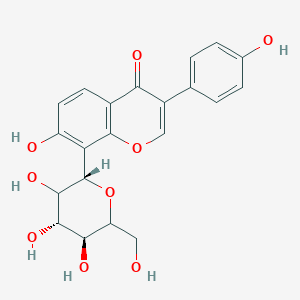| MeSH term | MeSH ID | Detail |
|---|---|---|
| Alzheimer Disease | D000544 | 76 associated lipids |
| Liver Cirrhosis | D008103 | 67 associated lipids |
| Brain Infarction | D020520 | 17 associated lipids |
| Infarction, Middle Cerebral Artery | D020244 | 35 associated lipids |
| Stroke | D020521 | 32 associated lipids |
| Brain Ischemia | D002545 | 89 associated lipids |
| Hypertension | D006973 | 115 associated lipids |
| Ischemic Attack, Transient | D002546 | 42 associated lipids |
| Fever | D005334 | 35 associated lipids |
| Hypertension, Renovascular | D006978 | 10 associated lipids |
| Angina Pectoris | D000787 | 27 associated lipids |
| Angina, Unstable | D000789 | 14 associated lipids |
| Parkinson Disease | D010300 | 53 associated lipids |
| Insulin Resistance | D007333 | 99 associated lipids |
| Memory Disorders | D008569 | 33 associated lipids |
| Glucose Intolerance | D018149 | 13 associated lipids |
| Ventricular Remodeling | D020257 | 28 associated lipids |
| Amnesia | D000647 | 12 associated lipids |
| Alcohol-Related Disorders | D019973 | 3 associated lipids |
| Hepatitis, Alcoholic | D006519 | 5 associated lipids |
SCHEMBL105486
Kakonein is a lipid of Polyketides (PK) class. Kakonein is associated with abnormalities such as Fatty Liver, Chronic liver disease, Morphologically altered structure, Hypertensive disease and Cardiovascular Diseases. The involved functions are known as protein expression, Extravasation, Liver damage, mRNA Expression and cell activation. Kakonein often locates in Body tissue, Hepatic, Microvilli, Cytoplasm and Membrane. The associated genes with Kakonein are TJP1 gene, CD14 gene, iberiotoxin, AT-Rich Interactive Domain-Containing Protein 1A and NKS1 gene. The related lipids are dehydrosoyasaponin I and Steroids. The related experimental models are Knock-out.
Cross Reference
Introduction
To understand associated biological information of SCHEMBL105486, we collected biological information of abnormalities, associated pathways, cellular/molecular locations, biological functions, related genes/proteins, lipids and common seen animal/experimental models with organized paragraphs from literatures.
What diseases are associated with SCHEMBL105486?
SCHEMBL105486 is suspected in Chronic liver disease, Hypertensive disease, Cardiovascular Diseases, Myocardial Infarction, Cerebrovascular accident, Fatty Liver and other diseases in descending order of the highest number of associated sentences.
Related references are mostly published in these journals:
| Disease | Cross reference | Weighted score | Related literature |
|---|
Possible diseases from mapped MeSH terms on references
We collected disease MeSH terms mapped to the references associated with SCHEMBL105486
PubChem Associated disorders and diseases
What pathways are associated with SCHEMBL105486
There are no associated biomedical information in the current reference collection.
PubChem Biomolecular Interactions and Pathways
Link to PubChem Biomolecular Interactions and PathwaysWhat cellular locations are associated with SCHEMBL105486?
Visualization in cellular structure
Associated locations are in red color. Not associated locations are in black.
Related references are published most in these journals:
| Location | Cross reference | Weighted score | Related literatures |
|---|
What functions are associated with SCHEMBL105486?
Related references are published most in these journals:
| Function | Cross reference | Weighted score | Related literatures |
|---|
What lipids are associated with SCHEMBL105486?
Related references are published most in these journals:
| Lipid concept | Cross reference | Weighted score | Related literatures |
|---|
What genes are associated with SCHEMBL105486?
Related references are published most in these journals:
| Gene | Cross reference | Weighted score | Related literatures |
|---|
What common seen animal models are associated with SCHEMBL105486?
Knock-out
Knock-out are used in the study 'MATE2 mediates vacuolar sequestration of flavonoid glycosides and glycoside malonates in Medicago truncatula.' (Zhao J et al., 2011).
Related references are published most in these journals:
| Model | Cross reference | Weighted score | Related literatures |
|---|
NCBI Entrez Crosslinks
All references with SCHEMBL105486
Download all related citations| Authors | Title | Published | Journal | PubMed Link |
|---|---|---|---|---|
| Kim YS et al. | The role of intestinal microflora on daidzein excretion in urine in humans treated with Chungpesagantang. | 2007 | Arch. Pharm. Res. | pmid:17489365 |
| Zheng J et al. | The effects of puerarin on CYP2D6 and CYP1A2 activities in vivo. | 2010 | Arch. Pharm. Res. | pmid:20195825 |
| Jin SE et al. | Anti-inflammatory and antioxidant activities of constituents isolated from Pueraria lobata roots. | 2012 | Arch. Pharm. Res. | pmid:22644850 |
| Hwang YP et al. | Protective effects of puerarin on carbon tetrachloride-induced hepatotoxicity. | 2007 | Arch. Pharm. Res. | pmid:18038910 |
| Lee DS et al. | Fecal metabolic activities of herbal components to bioactive compounds. | 2002 | Arch. Pharm. Res. | pmid:12009030 |
| Luo CF et al. | UDP-glucuronosyltransferase 1A1 is the principal enzyme responsible for puerarin metabolism in human liver microsomes. | 2012 | Arch. Toxicol. | pmid:22648071 |
| Lin F et al. | Protective effect of Puerarin on β-amyloid-induced neurotoxicity in rat hippocampal neurons. | 2012 | Arzneimittelforschung | pmid:22278629 |
| Zhao T et al. | The mechanism of 3-methoxy puerarin on decreasing the cerebral ischemia-reperfusion injury in rats. | 2007 | Asia Pac J Clin Nutr | pmid:17392123 |
| Chen F et al. | Puerarin enhances superoxide dismutase activity and inhibits RAGE and VEGF expression in retinas of STZ-induced early diabetic rats. | 2012 | Asian Pac J Trop Med | pmid:23146804 |
| Tang XL et al. | Dynamic oxidative stress and DNA damage induced by oestrogen deficiency and protective effects of puerarin and 17β-oestradiol in ovariectomized rats. | 2012 | Basic Clin. Pharmacol. Toxicol. | pmid:22333267 |
